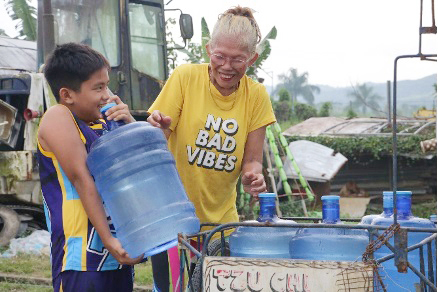It’s in food production that water is most critical.
“The link between water and food is strong,” says Lester R. Brown, president of Washington, D.C.-based Earth Policy Institute. “We drink, in one form or another, nearly 4 liters of water per day. But the food we consume each day requires at least 2,000 liters to produce, 500 times as much.”
For instance, to raise a ton of rice, a farmer needs a thousand gallons of water, according to the Laguna-based International Rice Research Institute.
About 89 percent of Filipinos consume rice on a daily basis, some studies show.
It takes so much water to grow crops. Global food: Waste not, want not, published by the Institution of Mechanical Engineers, showed that a farmer who plants cabbage has to water his crop with 237 liters to come up with 1 kilogram of the leafy vegetable. To produce a kilogram of tomato, about 214 liters of water is needed.
“We’re surrounded by a hidden world of water,” pointed out Stephen Leahy, author of the book, Your Water Footprint.
“Liters and liters of it are consumed by everything we eat, and everything we use and buy. Cars, furniture, books, dishes, TVs, highways, buildings, jewellery, toys and even electricity would not exist without water. It’s no exaggeration to say that water is far more valuable and useful than oil.”
Water footprint
A water footprint, as Leahy defined it, is the amount of water “consumed” to make, grow or produce something.
“I use the word consumed to make it clear this is water that can no longer be used for anything else,” he said.
Leahy explained it further in these words: “The water footprint of 500 ml of bottled water is 5.5 liters: 0.5 for the water in the bottle and another five contaminated in the process of making the plastic bottle from oil. The five liters consumed in making the bottle are as real water as the 500 ml you might drink but hardly anyone in business or government accounts for it.”
One 500-ml bottle of soft drink requires 175 liters of water to produce. Soft drink is almost entirely water so a half-liter bottle effectively contains a half-liter of water.
“That’s the direct water input,” pointed out Leahy, an independent journalist for over 20 years who has reported on environmental issues from dozens of countries. “But soft drinks are not just water in a bottle. When you include the production of all the flavoring ingredients, the manufacturing and supply chain, each bottle requires about 175 liters.”
To produce one smartphone requires 910 liters of water.
“Cellphones and smartphones use water throughout their production process, from creating the microchips to mining the metals used in the batteries to polishing the silica glass used in their touch screens,” Leahy wrote. “In total, each phone requires 910 liters of water to manufacture.”
It has been predicted that the number of activated cellphones is soon expected to exceed the world’s population. “To manufacture these phones will require 6.7 trillion liters of water, much of it blue and grey,” Leahy said.
“One of the biggest surprises (while writing the book) was learning how small direct use of water for drinking, cooking and showering is by comparison,” he said.
Surprisingly, flushing toilets is the biggest water daily use — not showers!
“Four hundred liters is not a trivial amount; however, the virtual water that’s in the things we eat, wear and use each day averages 7,500 liters in North America, resulting in a daily water footprint of almost 8,000 liters,” Leahy said. “That’s more than twice the size of the global average.”
“World demand for water doubles every 21 years, but the volume available is the same as it was in the Roman times,” observes Sir Crispin Tickell, former British ambassador to the United Nations and one of the organizers of the 1992 Earth Summit in Rio de Janeiro. “Something has got to give.”
